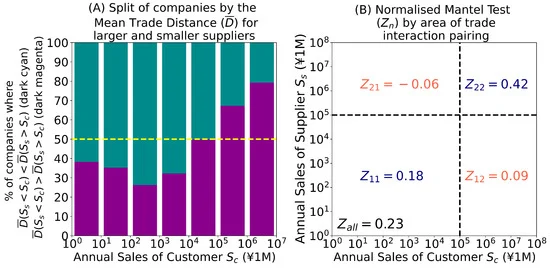2024.05.07
[Paper] “Spatial Constraints on Economic Interactions: A Complexity Approach to the Japanese Inter-Firm Trade Network” published by WRH Professors Misako Takayasu, Eduardo Viegas and Shlomo Havlin

WRH professors Misako Takayasu, Eduardo Viegas and Shlomo Havlin (School of Computing) published a paper in Mathematics.
“Spatial Constraints on Economic Interactions: A Complexity Approach to the Japanese Inter-Firm Trade Network”
https://doi.org/10.3390/math12081244
Abstract:
The trade distance is an important constraining factor underpinning the emergence of social and economic interactions of complex systems. However, agent-based studies supported by the granular analysis of distances are limited. Here, we present a complexity method that places the actual geographical locations of individual firms in Japan at the epicentre of our research. By combining methods derived from network science together with information theory measures, and by using a comprehensive dataset of Japanese inter-firm business transactions, we evaluate the effects of spatial features on the structural patterns of the economy. We find that the normalised probability distributions of the distances between interacting firms obey a power law like decay concomitant with the sizes of firms and regions. Furthermore, small firms would reach large distances to become customers of large firms, while trading between either only small firms or only large firms tends to be at smaller distances. Furthermore, a time evolution analysis suggests a reduction in the overall average trading distances in last 20 years. Lastly, our analysis concerning the trading dynamics among prefectures indicates that the preference to trade with neighbouring prefectures tends to be more pronounced at rural regions as opposed to the larger central conurbations.
Keywords:
MSC: 91B02

